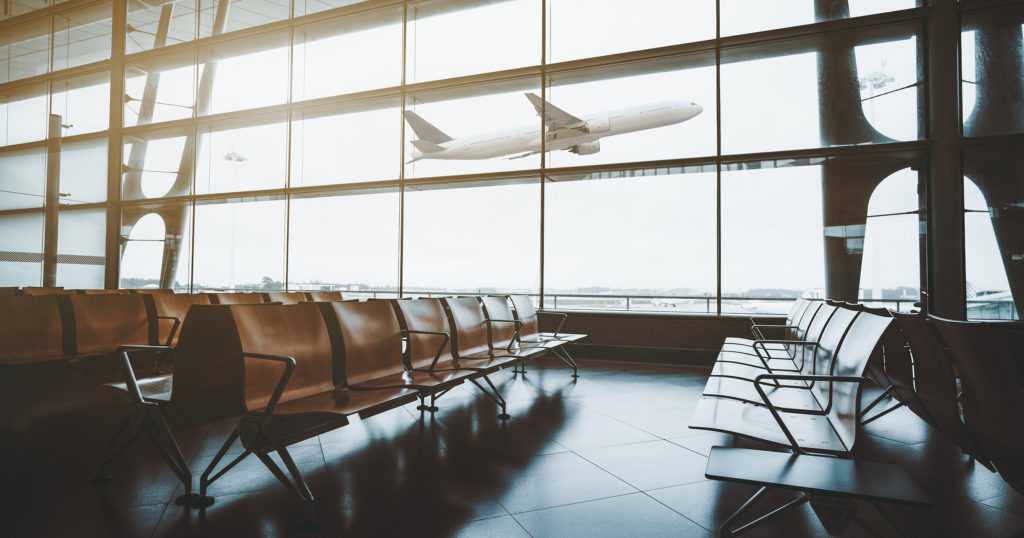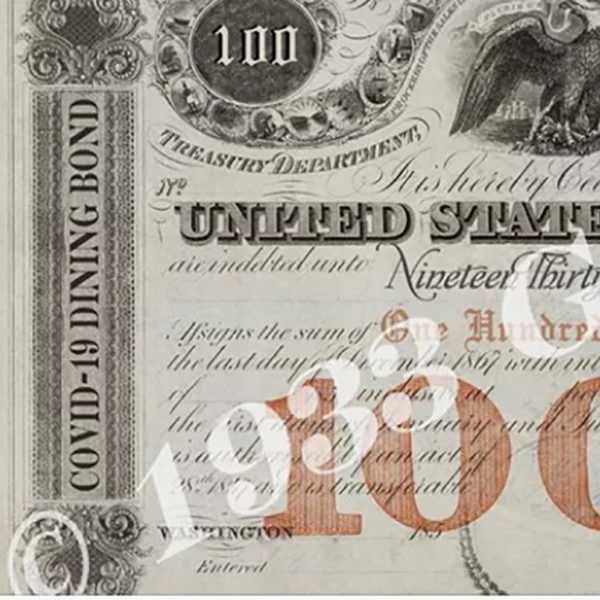Envisioning the New Normal for Travel: Airlines and Hotels


The travel industry is in upheaval as COVID-19 continues to alter societal norms and reshape the behaviors of consumers and people who work in these businesses.


Although the coronavirus has presented travel-related companies of all types with stark obstacles, airlines and hotels — which traditionally have been the backbone of the travel industry — are suffering through existential crises. Their customer bases have all but vanished and their financial situations have deteriorated to near unsustainable levels.
Airlines and hotels that aim to survive, and one day thrive again, must figure out how to adapt to the new normal of travel in the age of the pandemic and beyond.
AIRLINES
“The impact of COVID-19 on the airline industry has been absolutely catastrophic,” says Perry Flint, head of corporate communications USA for IATA, the International Air Transport Association. The organization advocates public policy and conducts financial services such as cross-currency billing and settlements for the airline industry. This year, the industry is expected to lose $84.3 billion globally, according to IATA. Airlines in the U.S. and Canada are expected to lose $23.1 billion, as international travel has all but come to a halt since March.
Airlines are responding by streamlining much of the travel experience, and striving to give passengers a greater sense of overall comfort, both emotional and physical, while addressing the realities of the pandemic. A big part of that comfort has involved changes to in-flight food service and seating arrangements.
United Airlines started offering only sealed beverages and “all-in-one” snack bags instead of open drinks and separate food items. Earlier in the year, most airlines left middle seats unsold and unoccupied, but by September several of them returned to selling middle seats, with the notable exception of Southwest which is continuing its no-middle-seat policy through at least November.
Giving facemasks and hand sanitizers to crew members and passengers helps ensure that hygiene standards are being met while also serving as visible evidence to passengers that cleanliness is an essential aspect of the in-flight experience. Technical innovations include installing contactless kiosks at terminals and gates, and replacing filters in air purification systems more frequently, and cleaning planes more thoroughly.
In the hope of attracting passengers, airlines have been offering extreme deals on flights. In September a roundtrip ticket from Miami to Cancun cost $164 on American Airlines. In August, Delta, United, American, Alaska and Hawaiian Airlines all also eliminated flight-change fees, which can cost around $200 each and have contributed heavily to airline profitability for the past decade.
U.S. airlines have slashed their passenger capacity, sold fewer tickets and conducted fewer flights, all by huge margins. They also have cut more than 50,000 jobs in reaction to plummeting sales amid the pandemic, with profits expected to remain low to negative into 2021. Airlines that stay on their current financial trajectory may not be able to continue operating. The CARES Act’s Payroll Support Program stipulated that the billions of dollars in federal aid that airlines started receiving in the spring required airlines to refrain from laying off more workers until Oct. 1, but airlines layoffs may still surpass 100,000 workers.
The ratings agency forecasts a modest rebound in travel in 2021, even though an effective vaccine or treatment might not arrive until later that year. Fitch is banking on a combination of increased traveler comfort with heightened airline safety precautions, lower infection rates, and quarantine-fatigue to give airline travel a slight boost.
Longer term, there may be reason for optimism. “Passengers sit in the same direction, have seat backs between them, and HEPA-filtered air flows from the ceiling to the floor while being exchanged every two to three minutes,” Flint says. “Going forward, airplane and airline cleaning will be more intensive. While business travel may not grow at the same rate, in absolute numbers it will continue to increase post-pandemic.”
He points out that while virtual conferencing and remote work have decreased the need for some business travel, there are still many deals and sensitive business conversations that are best conducted face to face, in the same room, without digital surveillance.
If history is any guide, Flint predicts that air travel will come back, despite the pandemic. Between the end of World War II and 2019, total air traffic declined in only a handful of years, according to Flint. And in those down years major shocks occurred, such as the 1981 U.S. air traffic controllers labor strike and the 2007-2008 global financial crisis. Outside of those dips, global air traffic has consistently risen by 4% to 6% each year, he says. Chinese domestic bookings already began bouncing back with an estimated 27.8 million seats occupied for the country’s “Golden Week” of holidays, the first week of October.
HOTELS
Just as airlines have been suffering, so have major hotel chains. Like airlines, hotels have responded to COVID-19 by offering huge customer deals and cutting staff. Over 4 million of the 16.9 million workers in leisure and hospitality remained unemployed into September. Revenue per available room at luxury hotels in the U.S. fell 21.3% in the first quarter, and 80.6% in the second quarter. Economy hotels took less of a hit, with revenues falling 13.3% and then 44.4% during those time periods.
“Hotels primarily reliant on leisure, without any group space to sell, are doing much better than hotels with huge ballrooms and meeting rooms,” says Nathan Line, Associate Professor at the Florida State University Dedman School of Hospitality. “That’s because one of the last things to come back will be major conferences and group travel, which are socially dense and often are booked years in advance.”
Sanitation measures by hotel chains also have stoked tension with housekeepers. Some hotels have eliminated daily cleaning and only send housekeepers to rooms between guest stays, or upon guest request. Companies argue this lowers risk of infection for guests. Housekeepers argue it increases their risk of infection, makes work harder, and cuts into their hours and pay. As hotels seek to balance the health needs of staff and guests, public relations challenges may pressure the companies to address social questions about who should be kept safe and who must sacrifice safety due to these changes.
Housekeeping also presents two other big challenges. Hotels that offer less frequent housekeeping still are seeking to maintain their room rates, but may be less appealing to guests who don’t relish the notion of cleaning their own rooms. “To me, part of the joy of staying in a hotel is having someone else make my bed,” one traveler noted. And hotels that are maintaining the same frequency of housekeeping must transform work that once was table stakes, preferably done out of sight from guests, into a visible part of their value proposition.
At the Mandarin Oriental Washington, D.C., housekeepers take 15 to 20 minutes more on each room and make sure guests see them cleaning. At the Sheraton Philadelphia Downtown, housekeepers use electrostatic sprayers with hospital-grade disinfectants to clean surfaces. Both hotels are cleaning more frequently in high-traffic common areas such as elevators and non-guestroom lavatories.
“Hotels are wary of cutting their rates, because that is a race to the bottom and it can take years to get back up to pre-recession rates,” Dr. Line says. “That’s why the focus is on maintaining rates but adding value for guests.”
Dr. Line sees certain recent hotel industry innovations staying around long after the pandemic fades, such as deep cleaning of all commonly touched surfaces and providing contactless services. This includes checking guests in and out, making/altering reservations and payment options. and employing elevator operators who now wear facemasks and gloves and ensure that guests stand in designated spots. Dr. Line notes a wide array of more creative innovations, from giving guests lunch-filled picnic baskets to reimbursing them for gas mileage, that might catch on as well.
For many would-be travelers, however, it’s the traditional features they care about that coronavirus has made perilous. Room service meals and hotel restaurants feel much less enjoyable when guests and staff must wear masks, minimize their time standing next to one another, or rely on smartphone apps to order grab-and-go food. Availability of hotel breakfast buffets, cocktail happy hours in the lobby, swimming pools, spas, and 24-hour fitness centers all depend on the status of state and city emergency health restrictions.
These hurdles for hotels stand in contrast to the advantages of the home-sharing model. Services such as AirBNB and Expedia’s Vrbo platform have rebounded faster than hotels during the pandemic, thanks to being able to allow guests to stay in fully detached homes without coming into contact with other people.
Expedia reported in its second quarter earnings report that total gross bookings turned positive in May after the April slump, thanks to growth led by Vrbo. Data from Edison Trends showed that, during the week of Aug. 17, AirBNB had 34% more spending than Hilton. AirBNB is promoting “Unique Stays” at places with novelty as a selling point. The website showcases tents, treehouses, huts, floating homes, castles, barns, and tiny houses in this category.
Even so, it may be too early to count hotels out for good. “When a vaccine comes out, pent-up demand could turn 2021 into the year of the mega-vacation,” says Dr. Line, who tracks hotel occupancy rates and compares data provided by industry executives. “People may take their money and time to do something spectacular that they were not able to do in 2020.”
WHAT IS ‘NORMAL’?
As long as travelers struggle to figure out how they can remain healthy despite no end in sight to coronavirus — or despite the fear of some new outbreak down the line — airlines and hotels of the travel industry will struggle to figure out how to succeed. It may be a fast-moving target for years, far beyond the duration of the pandemic or the arrival of a vaccine. When it comes to travel, the definition of “normal” will likely be in flux for the foreseeable future.

